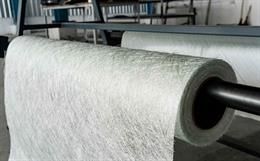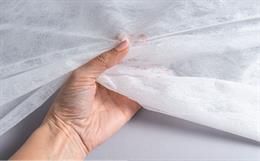Source: The Stitch Times
The expanded use of fabrics in modern vehicles for the replacement of conventional metal parts is increasingly being viewed as a way of reducing the weight of vehicles.
Nonwovens already play a vital role in interior comfort, reinforcement, sound insulation and advanced filtration, as is illustrated by the myriad products for the automotive industry displayed every three years at INDEX in Geneva.
However, it is highly likely that-in combination with other materials-new uses will be introduced for nonwovens in the next few years with the express objective of shedding weight, and consequently reducing both fuel consumption and CO2 emissions.
Fanciful concepts such as the attention-grabbing 2008 BMW GINA and the latest KG-1-exhibited recently in Amsterdam by the Dutch design studio KesselsGranger DesignWorks-are a direct result of this philosophy.
The GINA featured a fabric outer skin stretched across an adaptable frame of aluminum and carbon fibre so that the car's front and sides, including the doors, created a single uninterrupted, seamless piece.
In a radical break from tradition, the usual body elements found on production vehicles were dispensed with, and a new structure with a minimum amount of components took their place-a highly durable and extremely expansion-resistant fabric stretched across the metal structure.
This opened up new design potential, and some elements of the substructure could be moved with electro-hydraulic controls by the driver, changing the shape of the outer skin. The most striking example of this was the GINA's headlight design. When the headlights were not active, they were hidden under a special fabric cover. When turned on, the contour of the front end changed. Activated by the metal structure that lay beneath it, the previously closed fabric cover opened to the right and left of the kidney grille to reveal the double head-lights.
The turn indicators and the taillights also functioned without changes to the shape of the outer skin, but their position was only revealed on activation, with emitted light shining through a translucent fabric cover-permeable to light but not transparent.
The material employed had to meet exacting requirements and an industrially-produced hybrid fabric made from a stabilising mesh and netting support, a percentage of Lycra, and an outer layer that was both water-repellent and resistant to high and low temperatures was employed.
The fabric also had to remain dimensionally stable, irrespective of the temperature and air humidity it was exposed to, or after severe and constant expansion. The dimensional stability helped retain the cover's surface tension for a long period of time. Specialised BMW seat pattern designers were employed to cut the fabric webbing to size with maximum precision, determine the strategic position of attachment points and stretch the material.
The human body and anatomical functions were the inspiration for the 2009 KG-1, in which a mesh of protective fabric is again stretched around the composite frame like a second skin.
"The human skin has a function," explained James Granger of KesselsGranger. "It protects and repels water. It's also strong, but flexible, and we have translated these characteristics into the design. The KG-1 is therefore water-resistant, dirt-resistant and biodegradable."
This is only the beginning of what the design house sees as possible-believing that in the future, solar panels will be integrated into the skin, the lights embedded into the textile and that the bodywork will be able to move with the steering movement-just as the skin of the human body follows the movements of the skeleton.
Fabrics also play new roles in the latest Light Attitude programme developed by leading European automotive supplier Faurecia-again comprising concepts aimed at reducing the weight of vehicles.
The Light Attitude interiors concept features several applications never seen before, and fabrics replace many of the conventional hard-surface structures-even the centre console is made of fabric.
The glovebox lid becomes a sliding fabric cover and ventilation diffuses air through fabric rather than traditional hard vents.
A door module partially trimmed with natural fibres serves as an acoustic chamber, allowing the installation of smaller, lightweight speakers. A smart integrated docking station offers both weight reduction and new flexibility for incorporating ever-evolving media players. The new Light Attitude interiors are said to be between 15-20% lighter than conventional interior systems overall.
Moving away from concepts towards current practice, Switzerland's Rieter Automotive has announced that its first Ultra Silent underbody modules went into volume production on schedule in the second half of 2008.
This technology is based on patented materials and processes jointly developed with Rieter Textile Systems and involving combinations of high and low-density nonwoven and woven fabrics and foam products.
Featuring very light weight coupled with high rigidity and acoustic effectiveness, Ultra Silent's benefits are said to include:
- A 1.5 db or 3% average Sound Pressure Level (SPL) improvement of exterior noise compared to solid plastic solutions.
- In one specific vehicle example, 2.7kg (45%) lower weight was achieved on the underbody package.
As a 100% PET material Ultra Silent is glass free and totally recyclable and underbody shields in the technology can be combined with an acoustic heat shield system to further improve exterior noise and thermal management.
Another interesting new product is SawasorbExterior from Germany's Sandler, which combines different characteristics in a single medium-achieved solely through the nonwoven production process without additional process steps.
Computer-assisted simulation technology has enabled the company to develop new products corresponding to customer specifications without having to conduct protracted pilot productions and as a consequence, the raw materials, energy, time and costs involved in pilot production were all considerably reduced.
Polyester is known for its excellent heat and sound insulating properties, the company says, and the low weight of the new nonwoven material, its excellent emission values, recyclability and clean processing allow for a wide range of applications. Sandler's polyester nonwovens can be adjusted to specific customer demands and withstand even extreme conditions in exterior applications such as wheel-arch protection.
Many other examples of new nonwoven developments for the automotive sector will be showcased at the next INDEX event, which takes place at GENEVA PALEXPO from 12th-15th April 2011.
Originally published in The Stitch Times; August 2009







